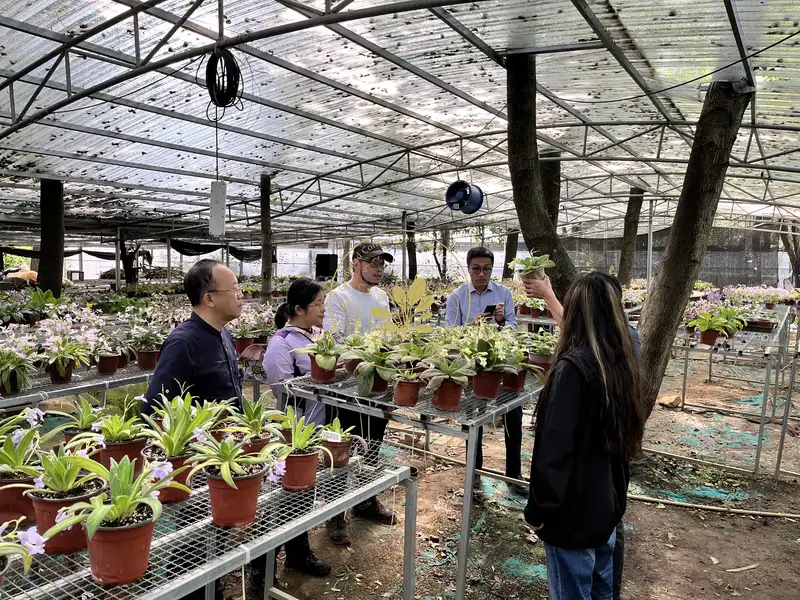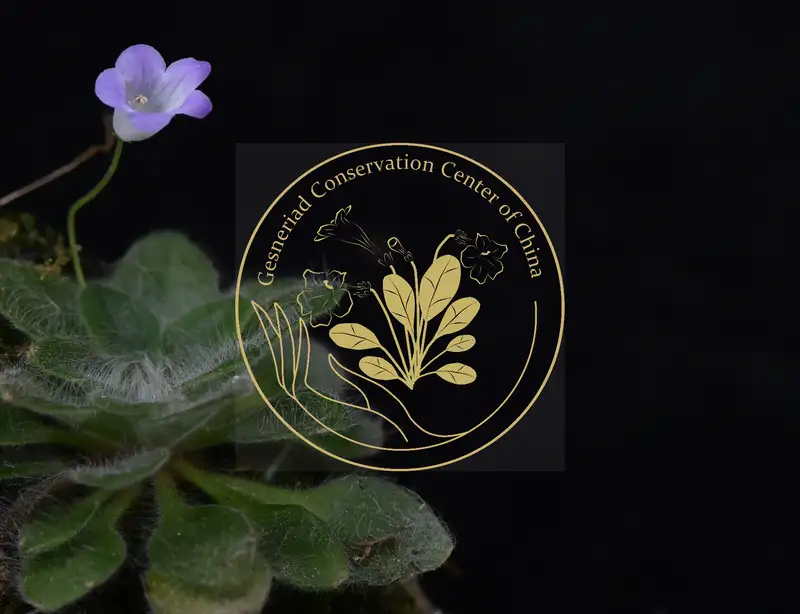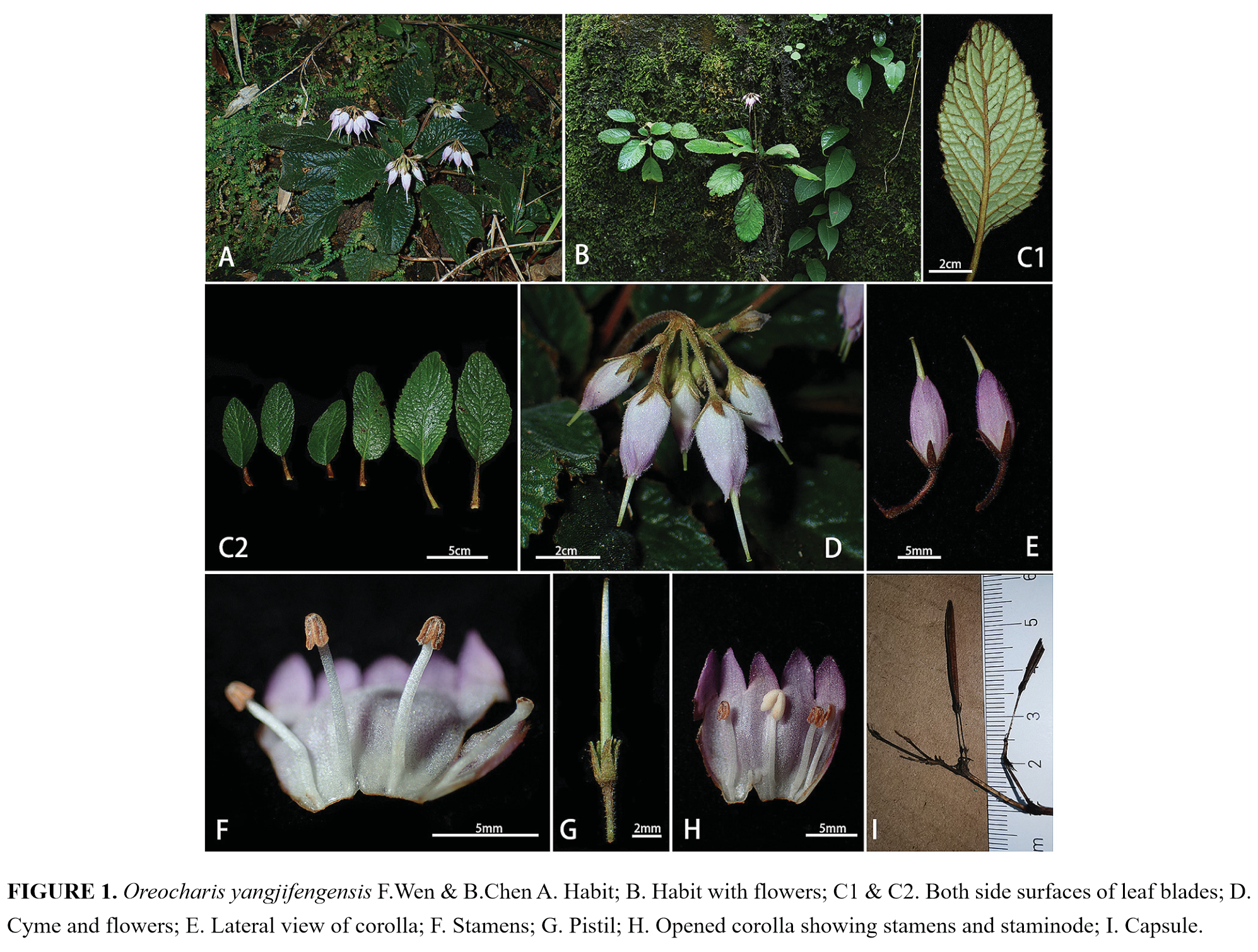No.9 XIN HONG, FU-ZHUN PAN, SHOU-BIAO ZHOU, WEN MA & FANG WEN
Primulina
cangwuensis (Gesneriaceae), a New Species from the Karst
Limestone Area in
Ann. Bot. Fennici 55: 37–42
ABSTRACT
Primulina cangwuensis X. Hong
& F. Wen (Gesneriaceae), a new species growing in rocky crevices on a
limestone hill in
Original article link:http://www.bioone.org/doi/full/10.5735/085.055.0106;http://www.sekj.org/ anb551-3.htm
PDF link: http://www.sekj.org/PDF/anb551-3free/anb55-037-042-free.pdf
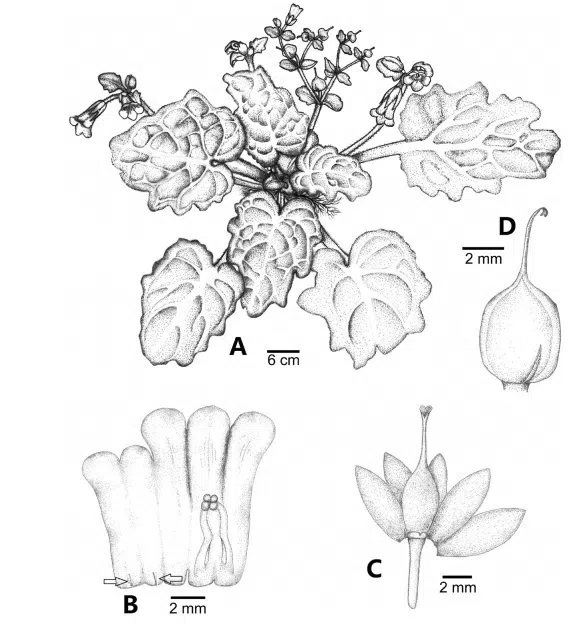
Fig. 1. Primulina cangwuensis (from the holotype). — A: Habit. — B: Opened corolla with stamens and staminodes (pointed out by arrows). — C: Calyx (partly dissected), disc and pistil. — D: Mature fruit.
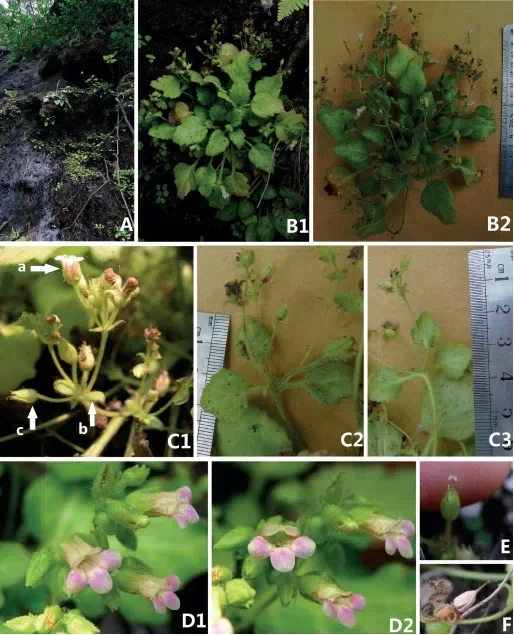
Fig. 2. Primulina cangwuensis. — A: Habitat. — B1 and B2: Habit. — C: Cyme, illustrating morphological polymerphism of bracts. C1: (a) vertical view of corolla, (b) two bracts, (c) young fruit; C2 and C3: three bracts (C2: adaxial surfaces, C3: abaxial surfaces). — D: Corolla in (D1) lateral view and (D2) frontal view. — E: Calyx lobes and bilobed stigma. — F: Capsule.
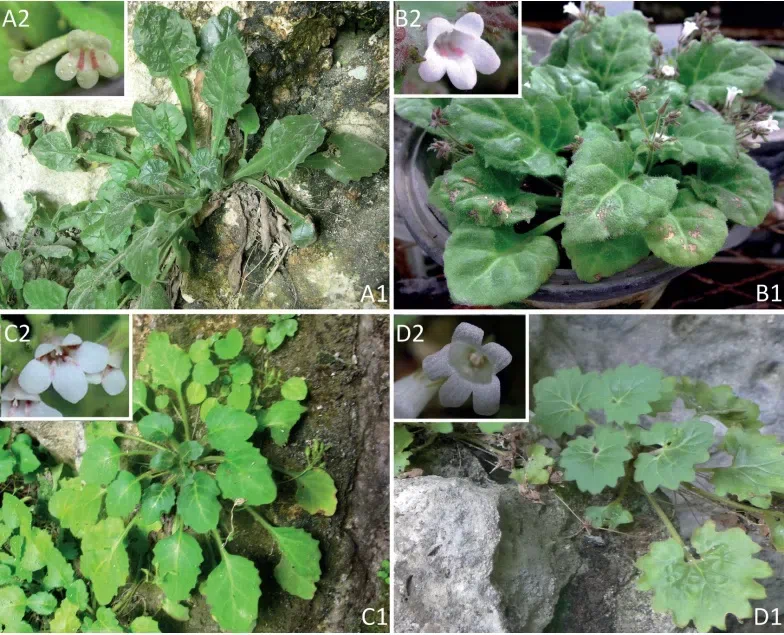
Fig. 3. Morphologically similar congeners of Primulina cangwuensis. — A: P. repanda (A1: plant in natural habitat, A2: corolla frontal view). — B: P. subulata (B1: cultivated plant, B2: corolla face view). — C: P. jianghuaensis (C1: plant in natural habitat, C2: corolla face view). — D: P. lobulata (D1: plant in habitat, D2: corolla face view).



